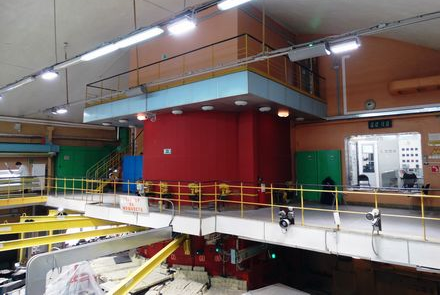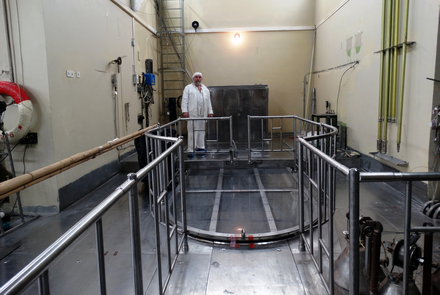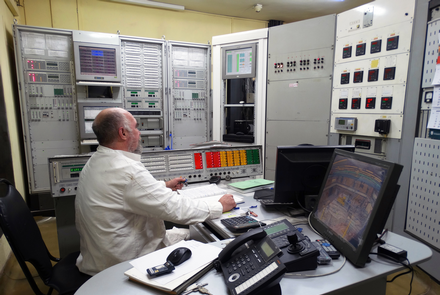|
Neutrons beamlines and research methods at neutron IR-8 research reactor
Neutron research complex is located in the physical hall of the research reactor IR-8, and includes the following neutron beamlines:
STRESS
Beamline created at the NRC "Kurchatov Institute" for internal stresses study. Designed to obtain direct information about deformations and stresses inside massive polycrystalline objects.
Neutron stress diffractometry method is used, that is based on measuring the displacement and broadening of diffraction peaks from microvolumes inside stressed material and comparing with unstressed samples. The method allows to build detailed maps of the spatial distribution of internal stresses in the material. Test sample maximum weight is 100 kg.
MOND
Beamline was created at the NRC "Kurchatov Institute" to study single crystals structure. Single-crystal neutron diffractometry method, based on a five-circle full-ring diffractometer, was implemented at the beamline, allowing to obtain single crystal structure basic characteristics. Single-crystal neutron diffractometry method is used, which allows to determine the following characteristics of the structure of a single crystal: spatial symmetry, unit cell parameters, atom coordinates, thermal parameters of atoms, filling factors, microstructural characteristics, with typical size of samples 5 ч 25 mm3
ATOS
Beamline for studying elementary excitations in single crystals by inelastic neutron scattering. It is possible to register the spectrum of scattered neutrons as a function of energy E and the transmitted momentum Q. Four-dimensional data array is obtained: counting, energy, two components of the vector Q (in the scattering plane). Inelastic coherent neutron scattering method used allows to study atomic and magnetic dynamics in solids. Samples are single crystals with a volume of at least 1 cm3
DISC
Studying method for the atomic and magnetic structures of powder materials under extreme conditions was realized at the powder diffractometry beamline which was created at the NRC “Kurchatov Institute”. Neutron diffraction method is based on elastic neutron scattering.
Possible measurement parameters:
• Temperature range from 7K to 1000K;
• Pressure - from atmospheric to 20 kbar;
• Magnetic field up to 1.4 T.
A neutron diffraction analysis is possible.
Samples - powder materials with a volume of 0.7 cm3 or more.
DRAGON
The neutron tomography beamline was created at the NRC "Kurchatov Institute" and designed to diagnose the internal structure of dimensional objects using neutron radiography and tomography.
Studying samples with volume more than 20 mm3 and heterogeneous inclusions (the minimum size of inclusions is 0.25 mm).
STOIK
Ultra-small angle neutron scattering beamline. Designed to study nanoscale heterogeneities in condensed matter. Created at the NRC "Kurchatov Institute".
The ultrafine-angle neutron scattering method based on a triple axis spectrometer is used.
Samples - porous materials, ceramics, alloys, ferromagnets, mesoscopic magnetic particles, etc.
|



